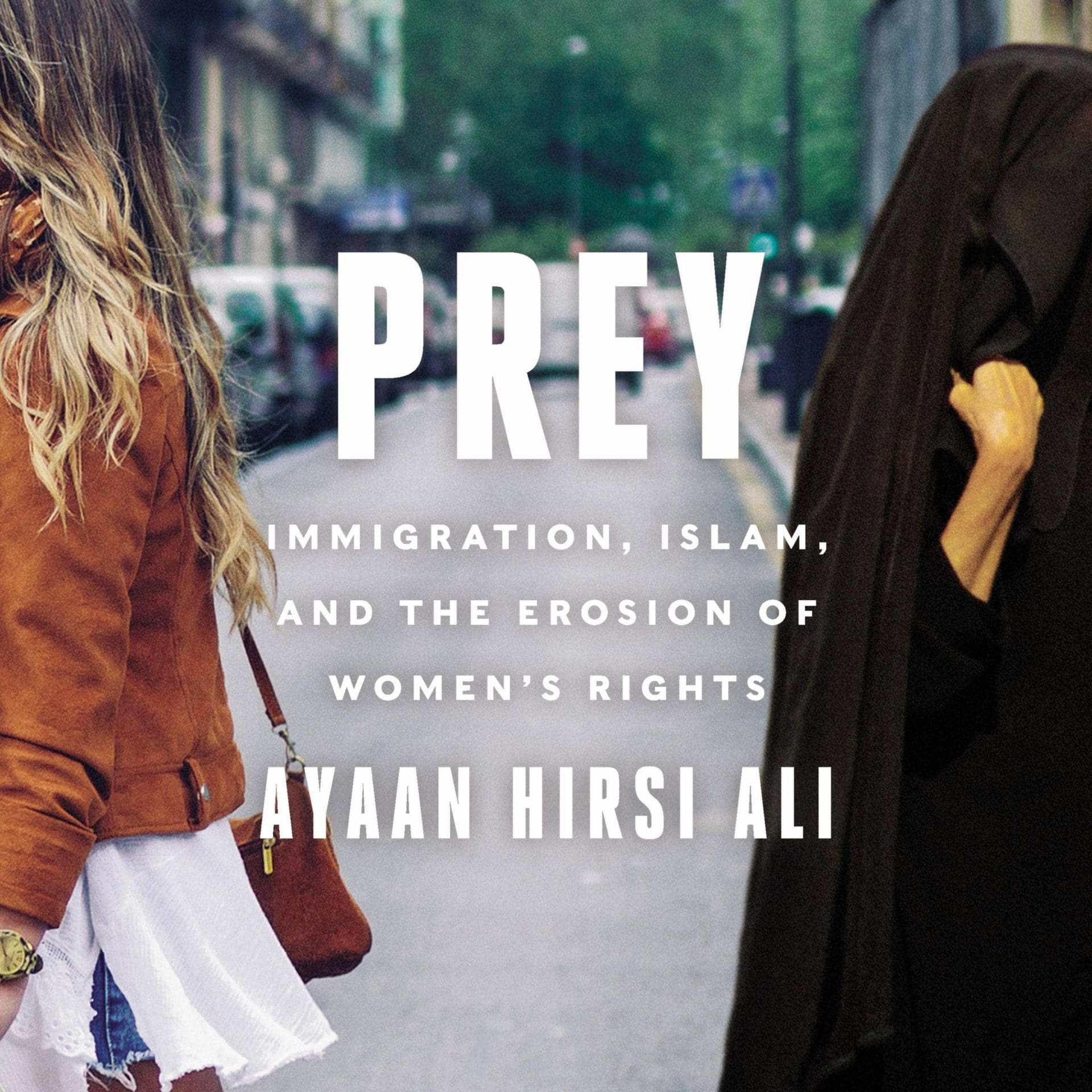Review of Prey: Immigration, Islam, and the Erosion of Women’s Rights by Ayaan Hirsi Ali
Ayaan Hirsi Ali was born into a Muslim family in Somalia, and after a brief period of living in Saudi Arabia her family settled in Kenya, where she was raised. In 1992, at the age of 23, fleeing an arranged marriage she sought asylum in the Netherlands. Successfully escaping from her family who had forced her to undergo genital mutilation as a child, she integrated into Dutch society. She learnt the language and studied political science at Leiden University. Soon, she became a prominent critic of radical Islam, triggering the wrath of Muslim extremists (she was put on an Al-Qaeda hit list in 2010) as well as achieving international recognition, making it onto Time’s top 100 most influential people in the world in 2005. A US citizen since 2013, she now works at the Hoover Institution where she did her research writing under the title Prey: Immigration, Islam, and the Erosion of Women’s Rights.
Over the last couple of years, Europe has experienced both an increase in immigration and a rise in sexual violence against women. The two issues have been causally linked by several radical right-wing groups, but until the publication of Prey, no significant attempt had been made to deal with the problem on a serious intellectual level, collecting and reviewing data in order to explore these matters in detail. Hirsi Ali establishes a link between immigration and increasing sexual violence against women, and traces back the root of the problem to the cultural differences between Christian Europe and Muslim-majority countries. She argues that while Western Europe has evolved culturally to the point that it presumes the innocence of women in a case of sexual assault, and protects their rights and safety, in Muslim-majority countries the attitude is still that women can be blamed for being sexually assaulted. In her book, Hirsi Ali emphasizes on multiple occasions that only some immigrant men commit such crimes, but she draws attention to the fact that due to cultural differences and the lack of integration there is a correlation between the increase in sexual violence in Europe and the influx of immigrants.
In Muslim-majority countries the attitude is still that women can be blamed for being sexually assaulted
In Chapter 2 of the book (titled ‘The Fifth Wave’), Hirsi Ali presents some statistics about immigration and sexual violence, to demonstrate the seriousness of the issue. Since 2009, around 3 million immigrants have arrived in Europe. In the year 2015, at the height of the migration crisis, a record 1.8 million illegal border crossings were reported in Europe.1 In the last ten years, 67 per cent of asylum seekers in Europe have been male, and 80 per cent of them have been under the age of 35. Approximately 2.4 million asylum applicants were from nine Muslim- majority countries (e.g., Afghanistan, Iraq, Syria, and Nigeria), so most immigrants are indeed of the Muslim faith. Four European countries (Germany, the United Kingdom, Italy, and France) host 70 per cent of Europe’s unauthorized immigrant population.2
Alongside the increase in arrivals to Europe, sexual violence has proliferated on the continent, as detailed in ‘Chapter 3: Sexual Violence by Numbers’. Between 2017 and 2018, there was a 17 per cent increase in instances of rape, and a 20 per cent increase in other forms of sexual assault in France.3 In French public places, 3 million women have experienced unwanted sexual attention and advances. In Germany in 2017, the number of victims of ‘sexual coercion’ rose by 41 per cent. Compared to the previous year, Sweden witnessed a 12 per cent increase in reported sex offences in 2016—the staggering jump in these statistics is all the more shocking because rates of sexual violence were relatively stable in Sweden between 2005 and 2011. Although Hirsi Ali recognizes that some of the increase in sexual crime statistics might be explained by new legal definitions of rape and greater public awareness about the issue (due to #metoo), she argues that it must also be acknowledged that the countries with the largest intake of immigrants have witnessed the largest increase in sexual violence. Therefore, she concludes, assessing the link between immigration and the rise of sexual violence is vitally important.
She reminds readers of the 2015 New Year’s Eve incident in Cologne, after which 661 women reported to the police that they had been sexually harassed by hundreds of ‘Arab’, ‘African’ and ‘foreign’-looking people. As it turned out, most of the offenders were newly arrived immigrants. From fear of being called racist, the German police did little to convict criminals. By 2019, only 52 charges had been pressed against the harassers, and only three offenders had been found guilty. The attacks in Cologne were carried out by groups of young men ambushing lone women. While such gang rape is condemned and viewed socially unacceptable in Europe, Hirsi Ali argues that in Muslim societies it is a commonly reported phenomenon, and it is called taharrush gamea in Arabic or ‘the rape game’.4
As part of the ‘rape game’, men surround women in concentric rings, strip off their clothes, and collectively rape them. Such instances were reported, for example, in 2006 in Egypt, when the crowd set out to celebrate the end of Ramadan with ‘rape games’. Hirsi Ali also cites the tragic recollections of CBS journalist Lara Logan, who was herself a victim of a ‘rape game’ in 2011 in Egypt when she covered the Arab Spring. She was brutally gang raped and was lucky to have escaped alive. The author argues that the events in Cologne during New Year’s Eve show that the practice of the ‘rape game’ has now been transported into Europe. She argues that immigrant men commit these crimes not because they feel oppressed or disenfranchised in Europe, but because in the countries they come from they get away with such crimes, and believe they can do the same in Europe as well.5 Tragically, Europe has done very little to demonstrate that on this continent, assaulting women is an indictable offence.
Hirsi Ali argues that it is politically inconvenient for many European governments to acknowledge that the crisis of women’s safety might be linked to immigration
As to why Europe does so little to prevent the erosion of women’s safety, Hirsi Ali argues that it is politically inconvenient for many European governments to acknowledge that the crisis of women’s safety might be linked to immigration, as well as to the cultural heritage of the immigrants. As a result, in most countries, the ethnic, racial, or religious backgrounds of the offenders are not reported in crime statistics—which made collecting data for her book very difficult. It is generally believed that disclosing such information on crime statistics would fuel the radical right. On the contrary, Hirsi Ali argues that dismantling the taboo around this issue and freely debating it is the way to end the radical right’s monopoly on discussing such issues. Widespread democratic discussion is also the way of finding solutions to the problem of ensuring women’s safety.
As for the cultural aspect of the question, the author argues that in Europe one is used to seeing women in public spaces, and women have the right to participate freely in public life. However, this is not the case in most Muslim-majority countries. In the countries where she grew up as a child it was not socially acceptable to see women alone, without a guardian. She argues that the same practices that she witnessed as a child in the Third World should not be imported in Europe. Ironically, during data collection in Munich, Hirsi Ali’s translator also experienced sexual harassment on the streets by an African man who groped her. In parts of Paris and other great European cities there are now ‘no-go’ areas for women, and women seem to disappear from public spaces as they are no longer safe for them. Europe is undergoing a change—this is the thesis of the book—and the hard-earned rights and safety of women are now being rolled back.
Quite revealingly, in its review, The New York Times6 accuses the book of being ‘cut through with bigotry’ as it ‘seems to latch onto the trope of men of colour threatening virtuous white women’. The reviewer argues that representing men of colour as ‘sexually aggressive’ and ‘uncontrolled’ has its roots in colonial history, and it is a practise that triggers xenophobia, so it must be condemned. The review argues that the author undermines the very liberal values she claims to support. Ayaan Hirsi Ali proposes stricter criminal punishment for immigrant sex offenders and tighter immigration policies to combat the problem. Jill Filipovic, the author of The New York Times review, as well as the author of The H-Spot: The Feminist Pursuit of Happiness, argues that such policies would go against the very liberal cause Hirsi Ali wishes to serve.
Ayaan Hirsi Ali believes that comments such as Filipovic’s are representative of how the feminists’ mission has drifted over the years, a question she addresses in ‘Chapter 10: The Feminist Predicament’: ‘The feminist mission has drifted, and women’s rights have been trumped by issues of racism, religion, and intersectionality.’7 Since the turn of the century the issue of Palestinian statehood has been a more important question for Western feminists than the safety of Palestinian women in their homes. While Western feminists are so preoccupied with the sins and irreparable evils of the ‘white man’, the sins of men of colour are excused since they are ‘victims of racism and colonialism’ themselves. Hirsi Ali argues that Western feminists need to wake up and start working (again) on ensuring that women can enjoy the most fundamental rights— uncompromised safety in all public spaces.
The point that The New York Time misses in its review is central to The Wall Street Journal’s8 discussion of the book. Avoiding the question of whether increasing sexual violence in Europe is or is not linked to the immigration of a large number of men will not solve the issue, The Wall Street Journal argues. On the other hand, a taboo surrounding this question can indeed fuel the radical right, which will, therefore, monopolize the discussion. As The Wall Street Journal highlights, Prey is ‘a courageous and bracing book’ which tries to shed light on this unquestionably important and inconvenient topic by dragging it out of the taboo zone. By normalizing the conversation about immigration and its effect on women’s rights, the topic can be the subject of a democratic discourse in which all sides are able to take part freely, instead of allowing the radicals to monopolize the discussion.
In short, the greatest achievement of the book is that it attempts to reasonably approach a question of great importance from a moderate perspective. Its main agenda is to draw attention to the issue, and not to demonize any group or religion. It is a book which enables sober discussion and provides a healthy number of statistics to think about— such attempts should be welcomed all across the political spectrum.
NOTES
1 Ayaan Hirsi Ali, Prey: Immigration, Islam, and the Erosion of Women’s Rights (Harper, 2021), 30.
2 Hirsi Ali, Prey, 35.
3 Hirsi Ali, Prey, 44.
4 Hirsi Ali, Prey, 140.
5 Hirsi Ali, Prey, 141.
6 Jill Filipovic, ‘Ayaan Hirsi Ali on Muslim Men and Western Women’, The New York Times (2021), www. nytimes.com/2021/02/09/books/review/ayaan-hirsi-ali- prey.html.
7 Hirsi Ali, Prey, 121.
8 Tunku Varadarajan, ‘Prey’ Review: A Forbidden Conversation’, The Wall Street Journal (2021), https://www.wsj.com/articles/prey-review- a-forbidden-conversation-11613170582.








